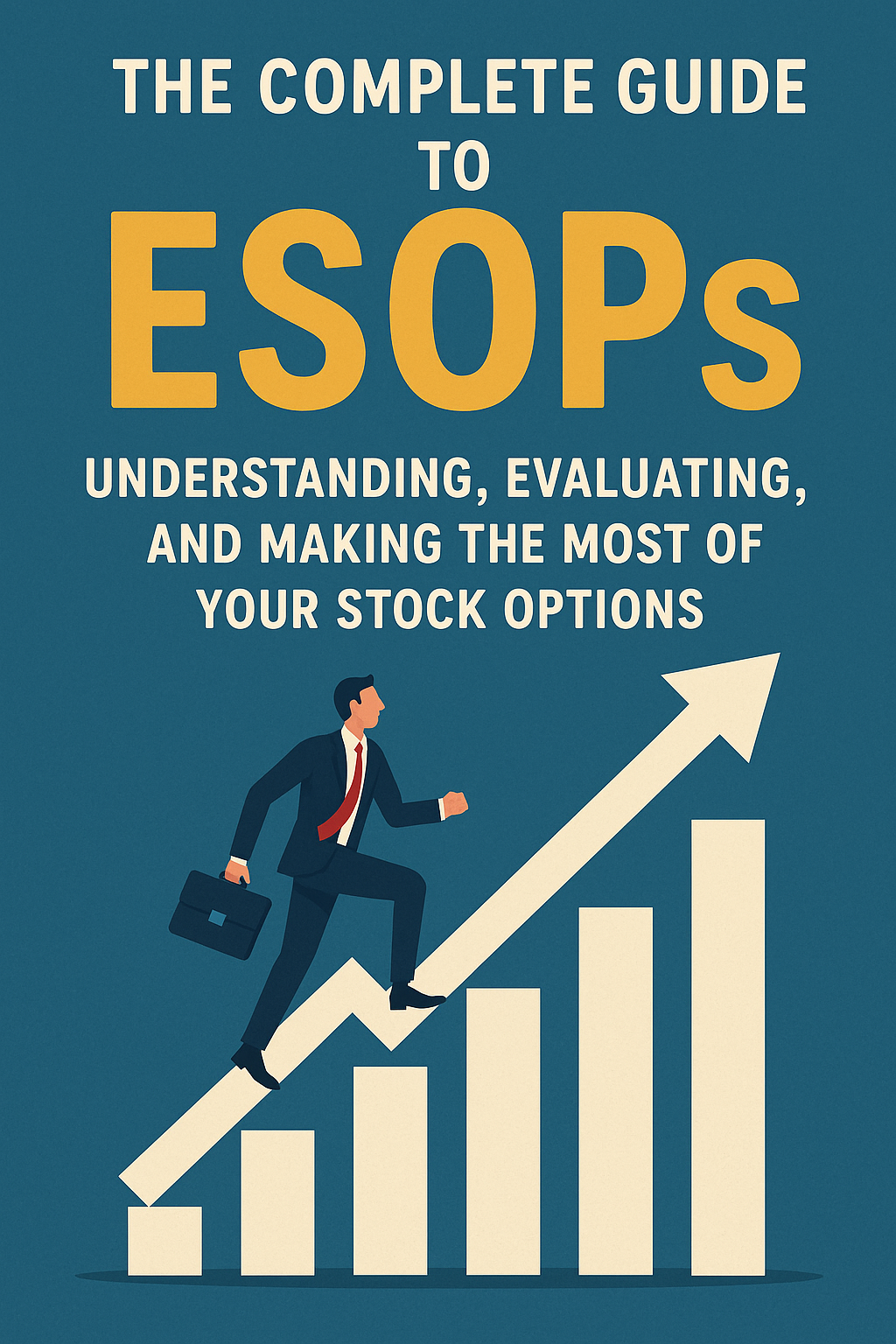Employee Stock Ownership Plans (ESOPs) are becoming a popular part of compensation packages, especially in startups and tech companies. While ESOPs can offer significant financial upside, understanding their structure and value is crucial before making any decisions.
What is an ESOP?
An ESOP (Employee Stock Ownership Plan) is a benefit plan that gives employees ownership interest in the company in the form of stock options. Instead of cash bonuses, companies may offer a portion of compensation as stock options to:
- Align employee interests with the company’s growth
- Conserve cash during early stages
- Offer potential wealth creation through equity
What is a Vesting Period?
The vesting period is the timeline over which employees earn the right to exercise (or own) their stock options.
Example:
If a company offers 1,000 stock options with a 4-year vesting period and a 1-year cliff:
- After 1 year (cliff), 25% (250 shares) vest
- Then, 1/48 of the options vest every month for the next 36 months
Cliff means you get nothing if you leave before completing that duration.
When Can You Cash ESOPs?
You can typically cash or sell your ESOPs during:
- Liquidity Events like IPO or acquisition
- Buyback Offers from the company
- Secondary Sale if allowed by the company
You cannot sell unvested shares. Even vested shares require company permission to be sold (in private firms).
What are the Taxes on ESOPs in India?
ESOPs are taxed twice:
- At the time of exercise – as perquisite income under “Income from Salary”
- Taxed on the difference between Fair Market Value (FMV) and Exercise Price
- At the time of sale – as capital gains
- Short-term Capital Gains (STCG) if held <24 months: Taxed at 15%
- Long-term Capital Gains (LTCG) if held >24 months: Taxed at 10% (beyond ₹1 lakh threshold)
How to Evaluate ESOP Value?
To estimate the real-world value of ESOPs:
| Factor | What to Check |
|---|---|
| Strike/Exercise Price | Cost to buy each share |
| Fair Market Value (FMV) | Current share price as per last round or valuation |
| Vesting Schedule | When do you actually own them? |
| Exit Timeline | Any expected IPO or buyback? |
| Dilution Risk | Future funding rounds may reduce your ownership |
Formula:
Estimated Value = (FMV – Exercise Price) × No. of Vested Options
Salary vs. ESOP: What Should You Prefer?
| Criteria | Fixed Salary | ESOP |
|---|---|---|
| Stability | High | Risky |
| Liquidity | Immediate | Depends on exit events |
| Tax Impact | Predictable | Can be complex and high |
| Upside | Limited | Potentially huge |
Verdict: For early-stage companies, ESOPs are a bet. Always balance with decent fixed compensation.
ESOP vs. Equity: What’s the Difference?
- ESOP: Right to buy shares at a fixed price. Subject to vesting.
- Equity: Actual ownership (shares already allocated). Generally no exercise needed.
ESOPs convert to equity only after exercising. They are a promise, not actual shares.
How Much ESOP is Enough?
It depends on the stage of the company and your role. For reference:
| Role | Typical ESOP Range (Early Stage) |
|---|---|
| Early Engineers | 0.1% – 1% |
| Senior Leadership | 0.5% – 2% |
| Founding Team | 2% – 10% |
Also consider fully diluted valuation while negotiating ESOP value.
Things to Know Before Accepting ESOPs
- Understand the Exit Timeline: Is there a planned IPO or acquisition?
- Clarity on Vesting: Ask for detailed schedule and cliff duration
- Exercise Price and FMV: Know the cost to exercise and the current valuation
- Buyback Policy: Will the company allow liquidity?
- Tax Implications: Factor tax at exercise and sale
- Dilution Risk: Ask about future fundraising plans
- Expiration Date: Options usually expire after 10 years or 90 days after leaving the company
- Cap Table Access: Understand how many total shares are issued
ESOPs can be an incredible wealth-building tool — if you understand the details. Don’t get swayed by large numbers unless you:
- Know the timeline to cash out
- Understand the cost to exercise
- Evaluate the risk of illiquidity
Always consult a financial advisor or legal expert before making ESOP-related decisions. In the startup world, it’s not just how much you own — it’s what, when, and how that matters.




